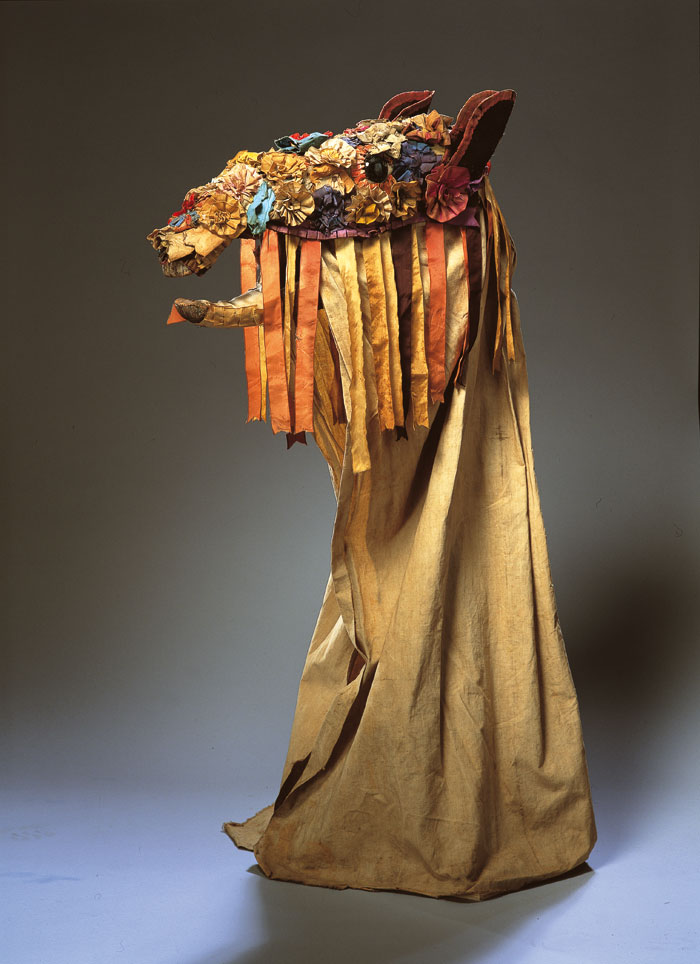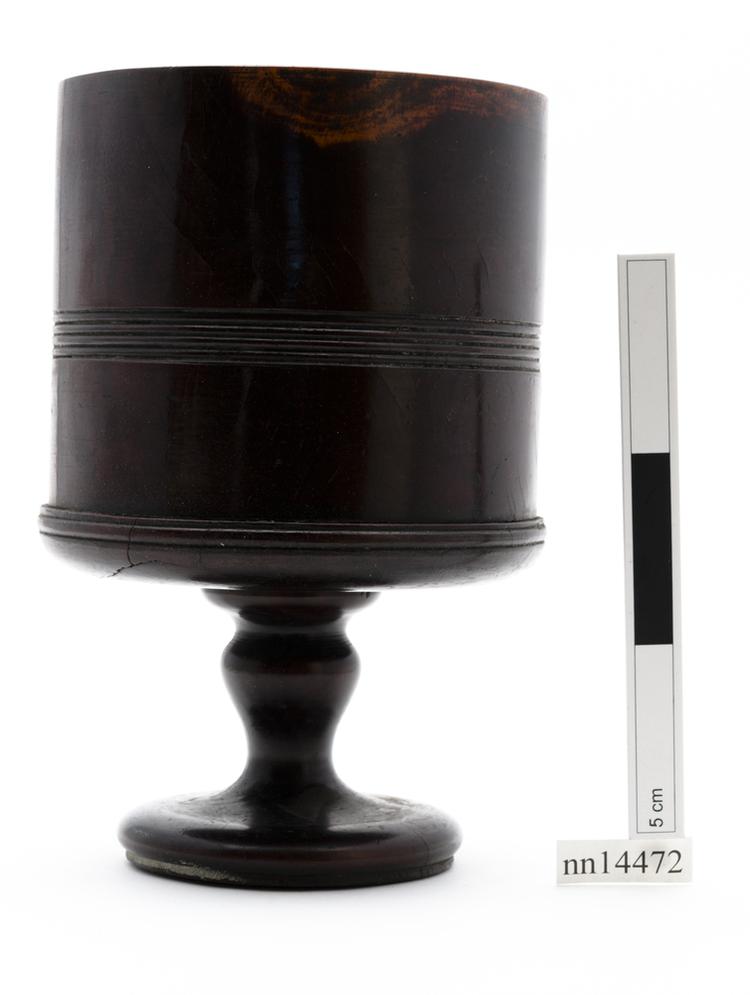Imagine this – you are at home during the festive season; tree on, lights twinkling, mince pie in hand. You hear a knock at the door, and a tap at the window too. You see the silhouette – a horse’s head. Mari Lwyd is here.
Mari Lwyd is the name given to a wassailing folk custom that involves a giant horse’s skull carried from house to house. It takes place in parts of Wales during the festive season. The horse’s head is decorated with ribbons and the person carrying the head is hidden under a cloak, with a pole to control the horse’s jaw. Sometimes the horse’s eyes are baubles, or lights.
Mari Lwyd goes from door to door with a group of traditional characters, like Punch and Judy. At each house they sing a song asking to come in. The occupants of the house sing back, often denying them entry at first, before eventually relenting. This back and forth is known as ‘pwnco’, and is an improvised battle of rhyme and verse.
Once the singers are allowed in they are given cakes and ales, the Mari Lwyd causes some mischief and everyone moves onto the next house.

Mari Lwyd, R. Fiend via Wikicommons CC BY-SA 3.0
Origins of Mari Lwyd
The first recorded mention of Mari Lwyd comes from 1800, in a book titled ‘A Tour through Part of North Wales’ by J. Evans. However the tradition is actually more associated with Southern Wales, and towns like Glamorgan and Gwent.
Where the name ‘Mari Lwyd’ comes from isn’t entirely clear. It translates roughly to ‘grey mare’ with some thinking this is a reference to the prominence of pale horses in Celtic mythology. Some, like folklorist Iowerth C. Peate thought it meant ‘Holy Mary’ referring to The Virgin Mary.
Some think something somewhere in the middle of these two, believing Mari Lwyd is a reference to a pregnant horse, cast out of the stable that Mary gave birth to Jesus in. The horse then roamed around looking for somewhere to birth her foal.

hobby horse
Anthropology
History of the Mari Lwyd
Wherever it came from, it’s a tradition that has waxed and waned in popularity.
Although it was popular in the nineteenth century, it was thought to have disappeared from Wales entirely by the beginning of the twentieth century. However, by the 1960s it had been revived in the town of Llangynwyd. From the 1970s onwards it appeared in more towns and villages across the country. Aberystwyth even marked the millennium by organising the world’s largest Mari Lwyd.
There are some similar traditions in England, such as Hoodening in Kent, or Old Tup in Nottinghamshire and Derbyshire. These also involved a horse’s head, a cloak, and going from house to house at Christmas time.
Wassailing
The idea of going from house to house asking for food and drinks around Christmas time is a time honoured tradition.
Wassailing (like in the carol ‘Here We Come A-Wassailing’) saw people as early as the 13th Century go from house to house wishing people well. People would go from house to house of their richer neighbours and friends asking for a drink – much like the cheeky Mari Lwyd.

Originally a wassail was a sugared and spiced drink made of mulled ale, curdled cream, roasted apples and eggs. If you drank this, you were wassailing. The term ‘wassailing’ actually comes from the Middle English wæs hæil meaning ‘be in health’.
It’s also represented in the second and third verses of We Wish You a Merry Christmas – ‘bring us some figgy pudding’ and ‘we won’t go until we get some’.


